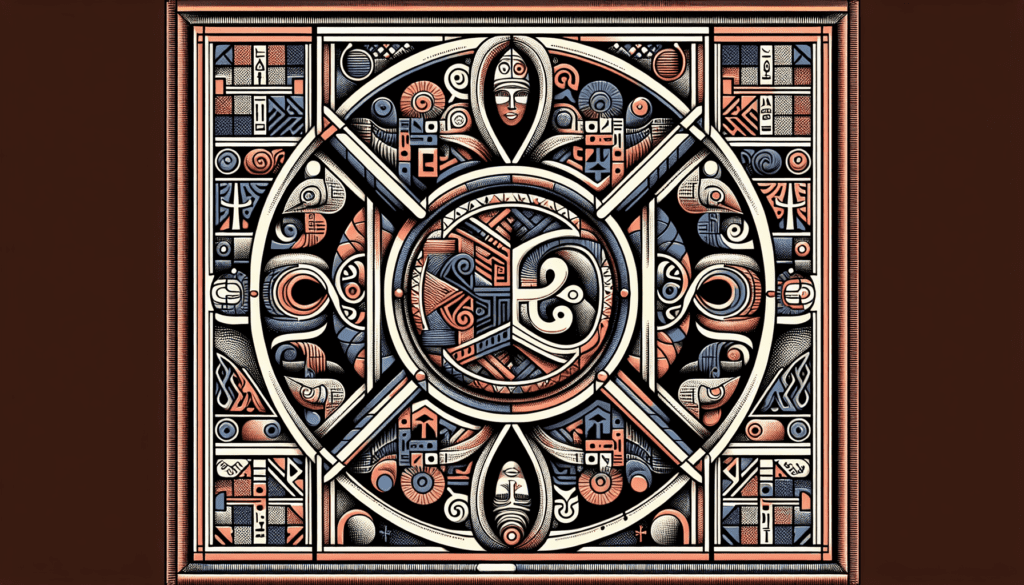Have you ever heard the fascinating tale about how the Persians invaded Egypt with an army of cats? It’s a story that has been told for centuries, captivating the imaginations of many. But is there any truth to this legend, or is it just another myth passed down through the ages? In this article, we will delve into the historical records and separate fact from fiction, uncovering the truth behind this captivating tale of feline warfare. So sit back, relax, and prepare to unravel the myth of the Persians invading Egypt with cats.

Historical Background
Egyptian-Persian Relations
Egyptian-Persian relations date back to ancient times, characterized by both conflict and cultural exchange. The Persians made several attempts to conquer Egypt, while Egyptian rulers sought to maintain their independence. These interactions influenced both civilizations and left a lasting impact on their respective cultures.
The Achaemenid Empire
The Achaemenid Empire, founded by Cyrus the Great in the 6th century BCE, was one of the largest empires in history. At its height, it stretched from Egypt to India, encompassing diverse regions and peoples. The Achaemenids had a central role in the Persian-Egyptian relationship, particularly during the reign of Darius I and his successors.
Cultural Differences
Egypt and Persia had distinct cultural identities, stemming from their unique histories, religions, and traditions. While Egypt emphasized the worship of multiple gods and goddesses, Persia embraced the Zoroastrian faith, which promoted monotheism. These cultural differences often led to clashes and misunderstandings between the two civilizations.
The Role of Cats in Ancient Egypt
Cats in Egyptian Mythology
Ancient Egyptians regarded cats as sacred animals and revered them for their mysterious and independent nature. They associated feline attributes, such as agility and grace, with their deities. The goddess Bastet, often depicted with the head of a lioness or domestic cat, held a prominent place in Egyptian mythology and was closely linked to the importance of cats in their society.
Domestication and Importance
It is believed that Egypt was one of the first places where cats were domesticated, as early evidence of their coexistence with humans dates back more than 4,000 years. Egyptians cherished cats for their ability to protect crops from rodents, keeping granaries safe from damage. Their hunting prowess also made them valuable companions for fishermen. Cats became an integral part of Egyptian households and were even mummified and buried with their owners.
Relation to Goddess Bastet
Goddess Bastet, known as the lioness-headed goddess or the goddess of home and fertility, was considered the protector of pharaohs and the divine embodiment of the household cat. She was worshipped throughout Egypt, and her cult gained significant popularity during the New Kingdom period. Devotees believed that by honoring Bastet, they would receive her blessings of fertility, protection, and good fortune.
Persian Military Tactics and Strategies
Overview of Persian Military
The Persian military, renowned for its size and discipline, was organized into various units, including infantry, cavalry, and archers. The Achaemenid Empire had a professional army, which allowed them to expand their influence across vast territories. Their military strength lay in their ability to adapt and employ diverse strategies depending on the terrain and the enemy they faced.
Invasion Strategies
When the Persians attempted to invade Egypt, they utilized several strategies to overcome the Egyptian defenses. The Achaemenids relied heavily on their naval prowess, utilizing their powerful fleet to gain control over the Nile and swiftly move their troops. Moreover, they employed psychological warfare, spreading fear and uncertainty among the Egyptian population to weaken their resolve.
Use of Animals in Warfare
Animals played an essential role in Persian warfare. The Persians employed war elephants, camels, and horses, which provided crucial advantages in battles and sieges. These animals brought terror to the enemy forces and had superior mobility, enabling the Persians to maneuver swiftly on the battlefield, making them a formidable adversary.
Claims of Persian Invasion with Cats
Origins of the Myth
The claim of Persians invading Egypt with cats is rooted in ancient legends and tales that have been passed down through generations. However, the exact origins of the myth remain uncertain. Some historians suggest that it may have originated from exaggerated stories that emerged during times of conflict between the two civilizations, with the intention of demonizing the Persians.
Primary Sources and Their Reliability
When examining the claims of the Persian invasion with cats, it is crucial to evaluate the reliability of primary sources. While ancient texts and inscriptions provide valuable insights into the historical events of the time, they must be approached with caution. Ancient accounts often contain biases, exaggerations, and omissions, as they were influenced by the perspectives and interests of the authors.
Alternative Interpretations
As with any historical event, alternative interpretations and explanations exist regarding the alleged Persian invasion with cats. Some historians argue that the presence of cats in Egypt during ancient times was primarily due to trade and the spread of cultural practices, rather than a result of military conquest. These alternative theories provide a broader understanding of the complex interactions between the Persian and Egyptian civilizations.

Debunking the Myth
Lack of Historical Evidence
Despite the prevalence of the myth, there is a lack of concrete historical evidence to support the claim of a Persian invasion with cats. No primary sources or archaeological findings directly substantiate this specific event. The absence of compelling evidence raises questions about the authenticity of the myth and calls for a critical examination of its veracity.
Logical Inconsistencies
When closely analyzing the myth, several logical inconsistencies emerge. The transportation of large numbers of cats across vast distances would have been logistically challenging for the Persian forces. Moreover, the Egyptian reverence for cats and their status as sacred animals would likely have deterred any deliberate harm inflicted upon them during a military invasion.
Contradictory Accounts
Different ancient sources provide contradictory accounts regarding the role of cats in the Persian-Egyptian relationship. Some suggest that the Persians brought cats to Egypt intentionally, while others emphasize the natural migration of cats brought about by trade and cultural interactions. These contradictions further complicate the narrative and highlight the need for a balanced and nuanced understanding of the historical context.
Cats as a Symbolic Element in Persian Culture
Persian Love for Cats
Just as cats held a special place in ancient Egyptian society, they were also highly regarded in Persian culture. The Persians admired cats for their intelligence, grace, and independence, viewing them as symbols of beauty and royalty. Cats were often depicted in Persian art and literature, embodying qualities that the Persians revered.
Cats in Persian Literature and Art
Persian literature and art extensively feature cats, illustrating their symbolism and significance in cultural expressions. Cats are frequently depicted in Persian miniatures, poetry, and folklore, reflecting their association with beauty, wisdom, and protection. These artistic representations provide valuable insights into the cultural importance of cats in Persian society.
Persian Influence on Egyptian Culture
While the direct influence of Persian cats in ancient Egypt is debatable, it cannot be denied that Persian culture left its imprint on Egyptian society. The Persians ruled over Egypt for a significant period during the Achaemenid Empire, leading to cultural exchanges between the two civilizations. These exchanges likely contributed to the prominence of cats in Egyptian mythology and society, albeit through indirect sources.
Alternative Explanations and Theories
Political Propaganda
The myth of the Persian invasion with cats could have roots in political propaganda. During times of conflict, the dissemination of stories that demonized the enemy was a common tactic employed by ancient civilizations. Such narratives aimed to strengthen unity among the Egyptian people and foster animosity towards the Persians by associating them with negative symbolism.
Misinterpretations of Hieroglyphics
Misinterpretations of hieroglyphics could have also contributed to the creation of the myth. Ancient Egyptian inscriptions and symbols may have been misunderstood or misinterpreted, leading to the belief that cats were introduced by the Persians. The complexities of translating ancient texts emphasize the need for careful analysis and scholarly expertise.
Symbolic Significance of Cats
Another explanation for the myth is the symbolic significance cats held in Egyptian and Persian cultures. Both civilizations revered cats for various reasons, and the merging of their cultural practices and beliefs could have perpetuated the myth. Symbolism often transcends historical accuracy, and it is important to consider the symbolic interpretations associated with cats in ancient societies.
Cultural Exchange between Persians and Egyptians
Trade and Diplomatic Relations
Trade and diplomatic relations between Persia and Egypt facilitated the exchange of goods, ideas, and cultural practices. The flourishing trade routes connecting the two civilizations allowed for the movement of various commodities, including animals. Cats could have been introduced to Egypt through these trade networks, contributing to their presence in ancient Egyptian society.
Architectural and Artistic Influences
The architectural and artistic styles of Persia also left a mark on ancient Egypt. Persian architectural elements, such as column designs and decorative motifs, can be seen in Egyptian structures during the period of Persian dominion. This exchange of architectural influences demonstrates the cultural synergy that occurred between the two civilizations.
Religious Syncretism
Religious syncretism, the blending of religious beliefs and practices, was common during ancient times. The interactions between Persian and Egyptian religious systems likely influenced the perception and significance of cats in both cultures. The integration of deities and religious rituals could have contributed to the mutual veneration of cats in Persia and Egypt.
Legacy of the Persian-Egyptian Relationship
Modern Fascination with the Myth
The myth of the Persian invasion with cats continues to captivate the imagination of many. It has found its way into popular culture, inspiring novels, movies, and artistic representations. The enduring allure of this myth highlights society’s fascination with ancient history and the mythical elements that embellish our understanding of the past.
Cultural Impact and Misconceptions
The myth has also shaped perceptions and misconceptions surrounding both Persian and Egyptian cultures. It has perpetuated stereotypes regarding the Persians’ ruthless conquests and the Egyptians’ reverence for cats. While these elements contain partial truths, the myth oversimplifies the complexities of these ancient civilizations and the nuances of their historical relationship.
Lessons in Historical Accuracy
The myth of the Persian invasion with cats serves as a reminder of the importance of historical accuracy in interpreting ancient events. It highlights the need for critical analysis, careful examination of primary sources, and an understanding of the cultural context of the time. By debunking myths and misconceptions, we can gain a clearer understanding of the real historical dynamics between Persia and Egypt.
Conclusion
The myth of the Persian invasion with cats, while captivating, lacks substantial historical evidence. It is more likely a result of political propaganda, misinterpretations of ancient texts, and the symbolic significance attributed to cats in Persian and Egyptian cultures. The complex relationship between Persia and Egypt involved trade, cultural exchanges, and occasional conflict, leaving a lasting cultural legacy that extends beyond the mythical narrative. By unraveling this myth, we can foster a deeper appreciation for the rich histories of both civilizations, giving due recognition to their accomplishments and contributions to our collective human heritage.

